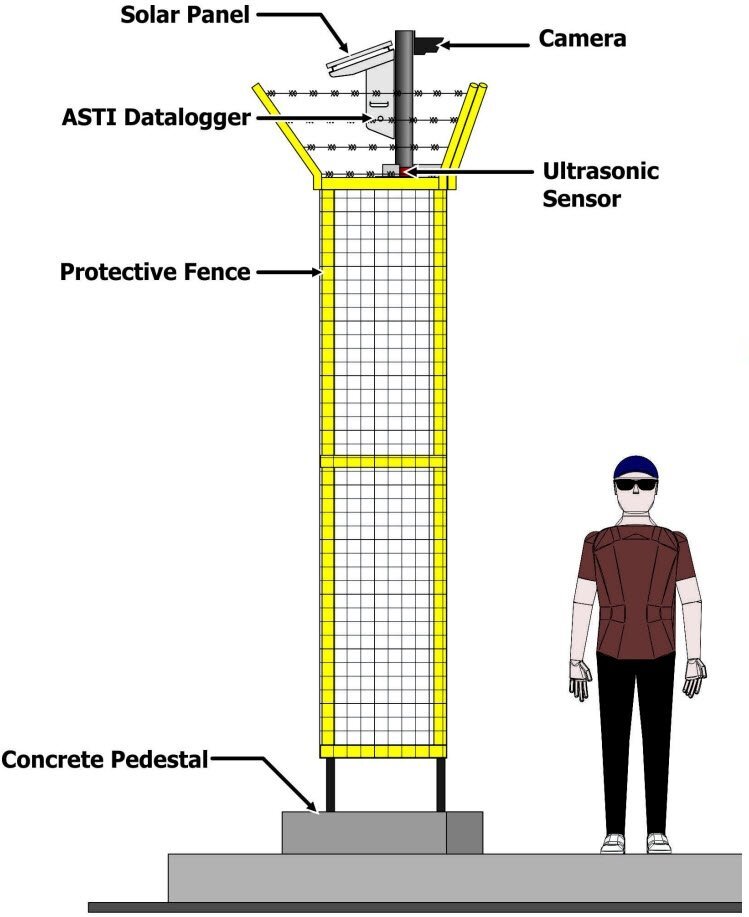ToughSonic® Sensors Monitor Flooding in Philippines
The Philippines Flood Warning System relies on Senix’s ultrasonic level and distance sensors to monitor coastal, river and urban flooding. There are many risks associated with tropical rains, storm surges, and tsunamis, especially in one of the most flood prone archipelagos in the world.
To manage these risks, the Philippine Department of Science and Technology (DOST) and other government agencies are expanding the world’s largest and most sophisticated flood warning system.
Extraordinary Flood Risks Require Extraordinary Technology
A variety of factors make the Philippines—and especially the Manila region—among the most flood prone in the world. Tropical rains flow rapidly from mountain uplands to the Manila basin, where dense urbanization accelerates run-off. To make matters worse, Manila is built on lowlands that are sinking even lower due to ground water extraction and the weight of urban concrete and steel. As a result, typhoon storm surges can now extend up to 20 kilometers inland. In addition to these weather risks, the Philippine coast is predicted to experience a tsunami up to 10 meters high in this century.
To cope with these extraordinary flood risks, the Philippine Department of Science and Technology (DOST) launched the National Operational Assessment of Hazards (NOAH) program. NOAH uses the latest mapping, sensor, communications, and computing technology to provide vulnerable communities with at least six hours of advance notice of impending flooding.
“What we wish to achieve is to save lives and property using brainpower and the latest tools,” said Raymund E. Liboro, DOST Assistant Secretary and Co-Executive Director of NOAH.
The Technology in Place
NOAH projects incorporate a wide range of advanced technologies, including LIDAR 3D terrain mapping, web geographic information systems, weather data collection and forecasting systems, Internet-accessible flood information networks, and an entire spectrum of remote sensors and communications systems.
ToughSonic® sensors are deployed on hundreds of coastal tide gauge platforms that provide tsunami and tropical storm surge warning data. They are also deployed on similar platforms that monitor flooding on the archipelago’s 258 rivers. Their most recent flood warning system monitors flooding on urban streets—see details in the diagram to the right. 
The Philippine Metro Advanced Traveler Information System (PhilMATIS) combines urban water level monitoring stations with sophisticated traffic reporting systems to warn residents and redirect traffic away from more than 180 flood-prone streets. By routing traffic to safe streets based on real-time water level and traffic data, communities can avoid paralyzing traffic jams that can increase safety and property risks, and severely hamper emergency response efforts.
Senix has provided ToughSonic water level sensors to DOST programs since 2008. The built-in flexibility and configurability of ToughSonic sensors allow researchers to fine-tune the configuration for each unique flood monitoring application. Once a sensor configuration is established, it is simply copied to subsequent sensors for fast and consistent sensor commissioning.
The combination of flexible configuration, easy commissioning, and durability in harsh coastal environments has helped DOST expand and maintain these cutting-edge systems.
“We started working with researchers at the Philippine Advanced Science and Technology Institute about seven years ago as they began developing this technology,” said Doug Boehm, Senix Founder and Chief Technology Officer. “The Philippine Government has been a global leader in creating remote flood management systems. We’ve worked closely with Clean World Trading and Supplies, our Philippine distributor, and the Philippine government to customize our sensors and meet their unique remote water level sensing requirements.”
In expanding the flood warning system, the Philippine government placed its fourth major order for ToughSonic ultrasonic water level sensors. With this order, the total number of ToughSonic sensors deployed will exceed 1,000.
For more information on how Senix can help with your application, contact us at info@senix.com or click here.

